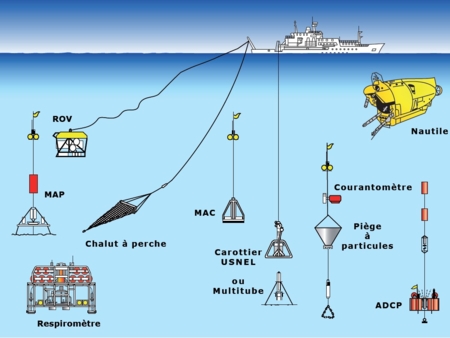Diversity and activity of microbial communities in cold seep sediments
A large portion of the greenhouse gas methane on Earth is trapped in marine sediments. However, little methane actually reaches the hydrsphere and the atmosphere, because it is efficiently consumed by anaerobic methane-oxidizing Archaea (ANME). This methane is mainly biogenic in marine sédiments, and is produced by methanogenic Archaea. Methane ascends from deep sources to the seabed, in cold seep sites of continental margins. In order to study microbial community diversity in cold seeps, and to determine geochemical factors that control these microbial communities, we compared four geochemically and geologically distinct sites. In this work, molecular tools (PCR, RT-P CR, DGGE, cloning) as well as genetic markers (16S rRNA, mcrA, dsrB) were employed, to circumvent the limits related to cultural methods. This research allowed: (i) to determine structure and diversity of archaeal communities in cold seep sediments, (ii) to highlight an active methanogenic community, (iii) the dominance of ANME affiliated sequences, and (iv) to identif y metabolically active Archaea belonging to uncultured archaeal groups. Hence this work broadened our view on the diversity of archaeal communities in cold seep sediments of continental margins.







